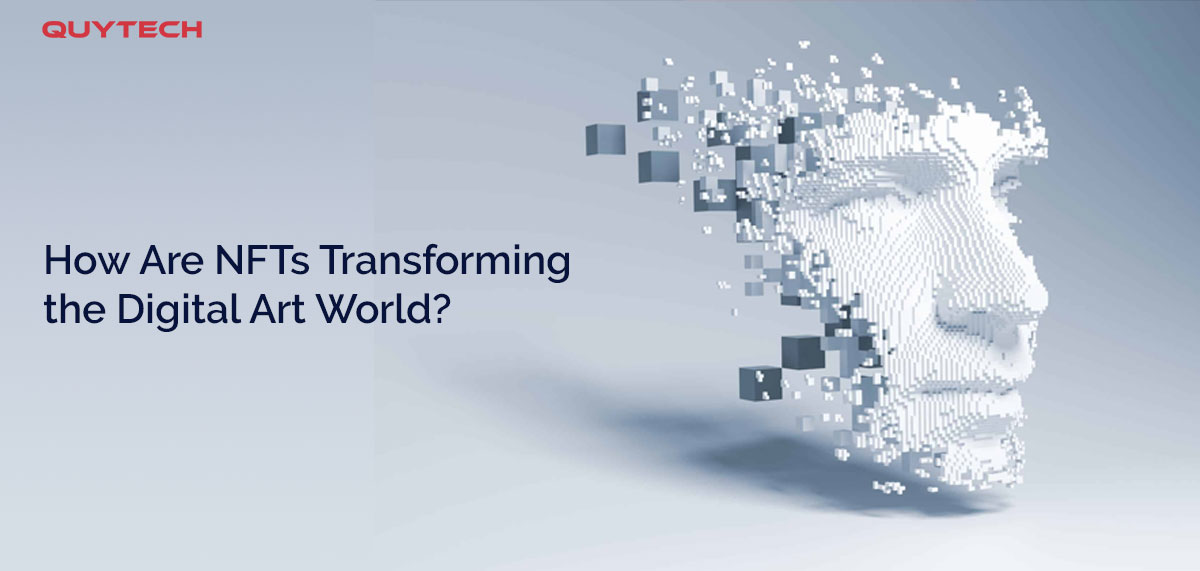You might already have heard of EDM producer 3LAU and pop star Grimes selling NFT artworks for millions of dollars. In October 2020, Christie’s New York, an art auction house, made history by selling Portraits of a Mind: Block 21, the first-ever NFT-linked physical artwork, for $130,000. Another NFT artwork – Beeple – purely digital this time, is on auction, with the current bid of $13.25 million.
So, what’s up with NFTs? How’s it making artists rich? Is it the new crypto bubble? And how’s it transforming the art world?
Let’s find out.
A Quick Dive into NFTs
Before getting into the impact of NFTs on the art world, let’s take a quick look at what NFTs are and how they work. Non-fungible tokens (or NFTs) are built on blockchain technology and offer a secure record of transactions, just like fungible assets, such as Bitcoin or other cryptocurrencies.
However, fungible assets can be replaced with another identical entity of the same value, like a dollar bill. You can multiply them (2 BTC), divide them (0.5 BTC). Contrarily, non-fungible tokens are unique. They’re associated with specific goods and items and aren’t interchangeable or replicable. This makes them rare, immutable, and inimitable.
How Are NFTs Fueling the Digital Art Boom?
Collecting art goes a long way back and can be traced back to the ancient civilizations of Egypt, India, China, and Babylonia. Over the years, the way people purchase, collect, and store art has changed.
As we live in the digital era, the demand for digital artwork is on the rise. But the problems with digital artwork are authenticity and uniqueness. You create digital artwork and share it online. People can download and share it easily.
NFTs make digital artworks similar to physical ones. They turn digital art into a real-world asset. Since NFTs reside on the blockchain, it’s impossible for anyone to entirely duplicate the artwork it’s tied to. This gives digital artists a way to monetize their artwork, stay authentic, and avoid issues like piracy and duplication.
And recent auction sales have seen NFT artworks going for millions, which means people want to collect them. The reasons for buying a digital NFT artwork can vary. You can buy it because you like it, or you can buy it as an investment.

From an artist’s perspective, NFT provides an excellent way to connect directly with your collectors. And it goes without saying that NFT is making artists rich.
The Future of NFTs
Digital art is having a moment, but what’s next. Well, NFTs can open doors for something much more than just financial ownership. Artists can design unique digital experiences for collectors. Entire websites and mobile apps can be made specific to token holders. There’s really no limit to what can be done with Non-Fungible Tokens.
Read More: Top NFT Use Cases and Ideas for Businesses in 2021!
Our Work
Artwork Crypto Collectible Project
Artwork is a Crypto collectible project developed on Tron blockchain where users can collect the artwork of the other users and reproduce unique artwork.
- A cryptographic hash is assigned against each Artwork.
- AI and computer vision techniques are used for image recognition and merging to create a unique piece of art.
- Enabled with smart contracts the art ownership can be transferred to another person.
- With blockchain create, collect, upload and purchase new Art pieces.
- Users can merge uploaded digital art with others uploaded one to create a unique Art.
Contact us: info@quytech.com
Quytech, a prominent NFT Marketplace Development company, creates NFT marketplaces to promote human intellectual and artistic values while also facilitating efficient digital asset management.
Final Thoughts
NFTs are transforming the digital art landscape, and it’s just the beginning. As virtual real estate platforms like video games are on the rise, the demand for NFT artworks, both for collection and investment purposes, will continue to grow.

